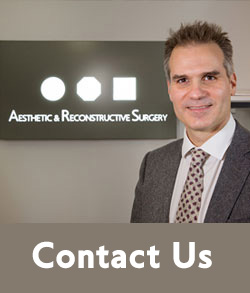What is non-surgical blepharoplasty?
Non-surgical blepharoplasty is used in selected cases where eyelid laxity is still at an early stage. The technique uses a specialized laser (fractional laser) and aims to stimulate natural collagen production while also tightening the skin of the eyelid area.Is blepharoplasty with this method truly non-surgical? Is it a real method?
First, note that by “non-surgical” we mean a non-invasive technique performed in an atraumatic manner. Non-surgical blepharoplasty can be used in patients with early-stage laxity, but it cannot replace classic blepharoplasty. Despite the prevailing myth, this method has limited indications and is useful only at very early stages of eyelid dermatochalasis.What are the advantages of non-surgical blepharoplasty?
Non-surgical blepharoplasty offers the following advantages:- No surgical incisions on the eyelids and therefore no sutures
- Performed with application of a special topical anesthetic cream, without the need for medication after treatment
- No pain during treatment, only mild discomfort
Who is it for?
Despite the myth, this method has limited indications and is useful only at very early stages of eyelid dermatochalasis. It is intended for patients with early-stage laxity. This usually means younger patients who do not yet need classic blepharoplasty. It should be noted that this method does not affect brow ptosis or fine expression lines, and results for dark circles vary from patient to patient.Want to know more ?
Contact the doctor
How is the procedure performed?
Non-surgical blepharoplasty is performed in-office with a specialized laser. By stimulating collagen production, fine wrinkles and early laxity in the eyelid skin improve. Its mechanism relies on the selective increase of temperature, applied to a specific zone of the skin.What happens after the procedure?
After the procedure, the patient may develop swelling and, in some cases, redness at the treated sites. There may also be continuous tearing. Post-procedure care includes a moisturizing ointment, which may cause temporary blurred vision. In general, this is among the most common side effects, as is temporary photosensitivity. Full recovery is estimated at about 2 weeks. During this period, patients should follow the doctor’s instructions and rest adequately. After 1 week, once healing has progressed, the patient should wear sunglasses outdoors to protect the skin from sun and wind. For the next 3 weeks, avoid strenuous physical activity that increases blood flow to the eyes, such as working out, lifting weights, bending over, or even crying.Why us?
Dr. Nikolaos Karmiris uses state-of-the-art equipment, performs 100% safe methods and innovative techniques, and has many years of specialized experience abroad. Contact him today to learn more about non-surgical blepharoplasty and whether you are a suitable candidate for this technique.Want to know more ?
Contact the doctor
Face Aesthetic Surgery
Menu

Get in touch with the doctor
- Phone: 210 63 999 44
- Email: info@nkarmiris.gr



